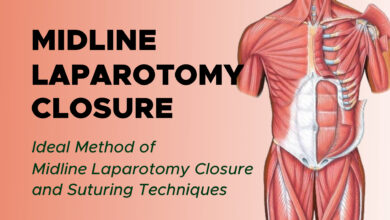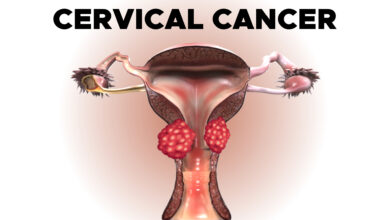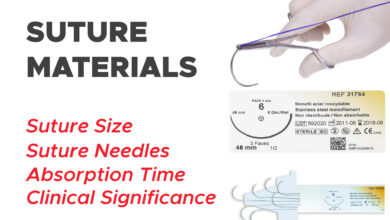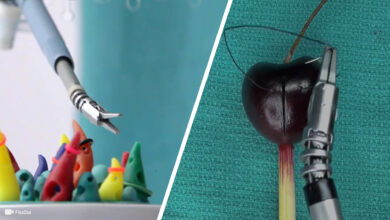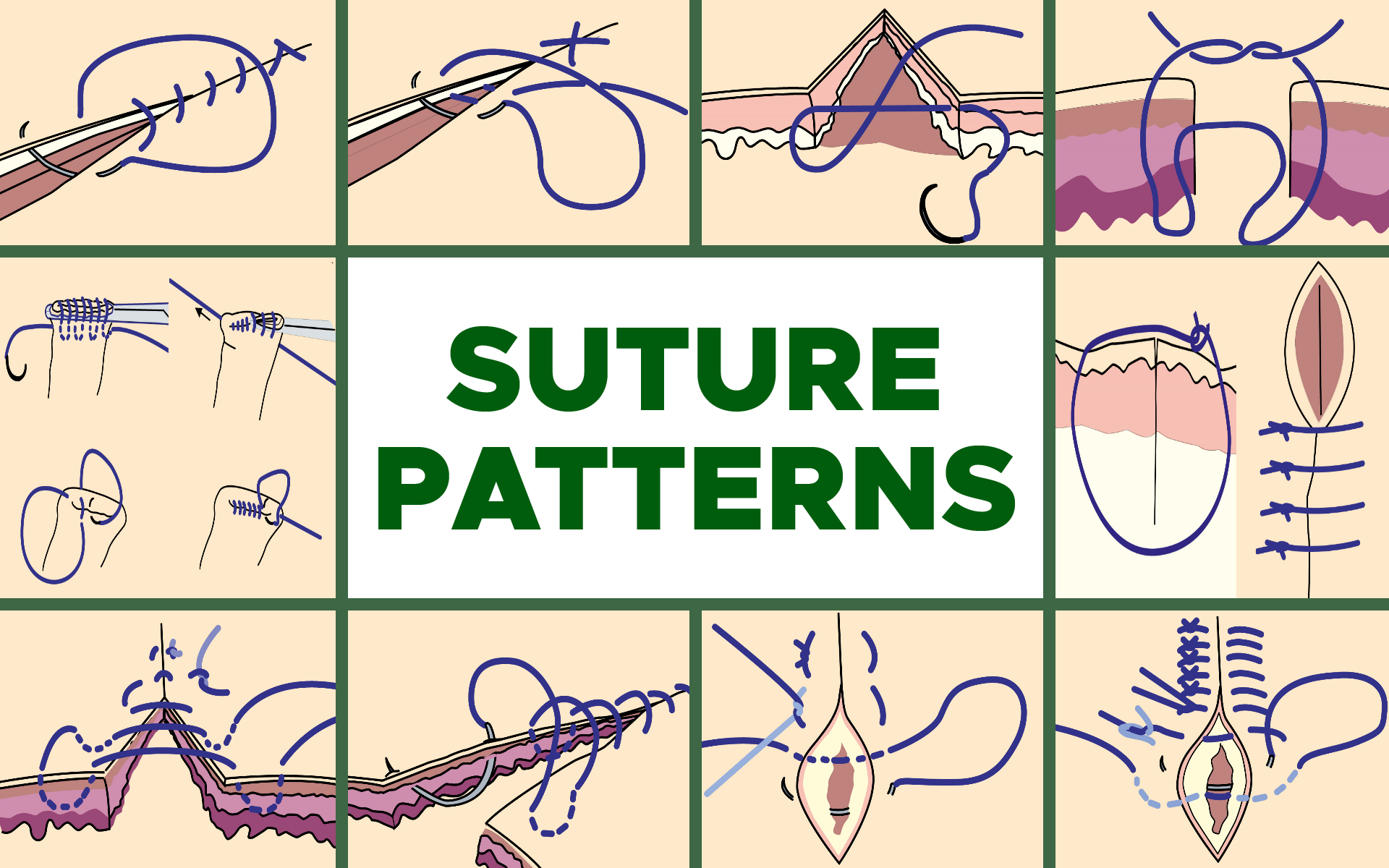
Common Suture Patterns
Development of good technique requires a knowledge and understanding of the rational mechanics involved in suturing.
When taking a bite of the tissue, the needle should be pushed through using only a wrist action, if it becomes difficult to pass through the tissue, an incorrect needle may have been selected, or the needle may be blunt.
The tension of the suture material should be maintained throughout to prevent slack sutures, and the distance between the sutures should be equal.
The use of a specific suture pattern may vary depending on the area being sutured, the length of the incision, the tension at the suture line, and the specific need for apposition, inversion, or eversion of the tissues.
Suture patterns can be broadly categorized as interrupted or continuous.
A. Interrupted Patterns
Interrupted sutures are used to relieve tension, or in areas where more strength is required. They are not as economical as a continuous suture as a knot must be tied after each suture placement, using a great deal more suture material. Should one of the sutures fail, this will not affect the rest of the sutures placed in the wound.
- Time consuming.
- Large amounts of suture materials.
- Presence of additional amounts of suture materials within the tissue.
- Ability to maintain strength and tissue position if part of suture line fails or tears.
- Provide more accurate edge to edge apposition.
- Less scar tissue formation in the healed wound.
B. Continuous Patterns
Continuous patterns are the quickest type of suture pattern, used for areas of low tension such as the closure of body cavities, muscle layers, adipose tissue, and skin, and are more economical than interrupted patterns.
If pulled too tightly, however, the wound may pucker. If any part of the wound breaks down due to failure of the continuous suture, the rest of the wound may be affected and re-open along its length.
- Less time consuming.
- Fewer amounts of suture materials.
- Fewer suture materials within the tissue.
- Unable to maintain, if one knot is slipped, fail or tear out the entire suture line become loosened.
- Difficult to gain an accurate edge to edge apposition.
- More scar tissue formation.
C. Appositional Patterns
1. Simple Interrupted Suture
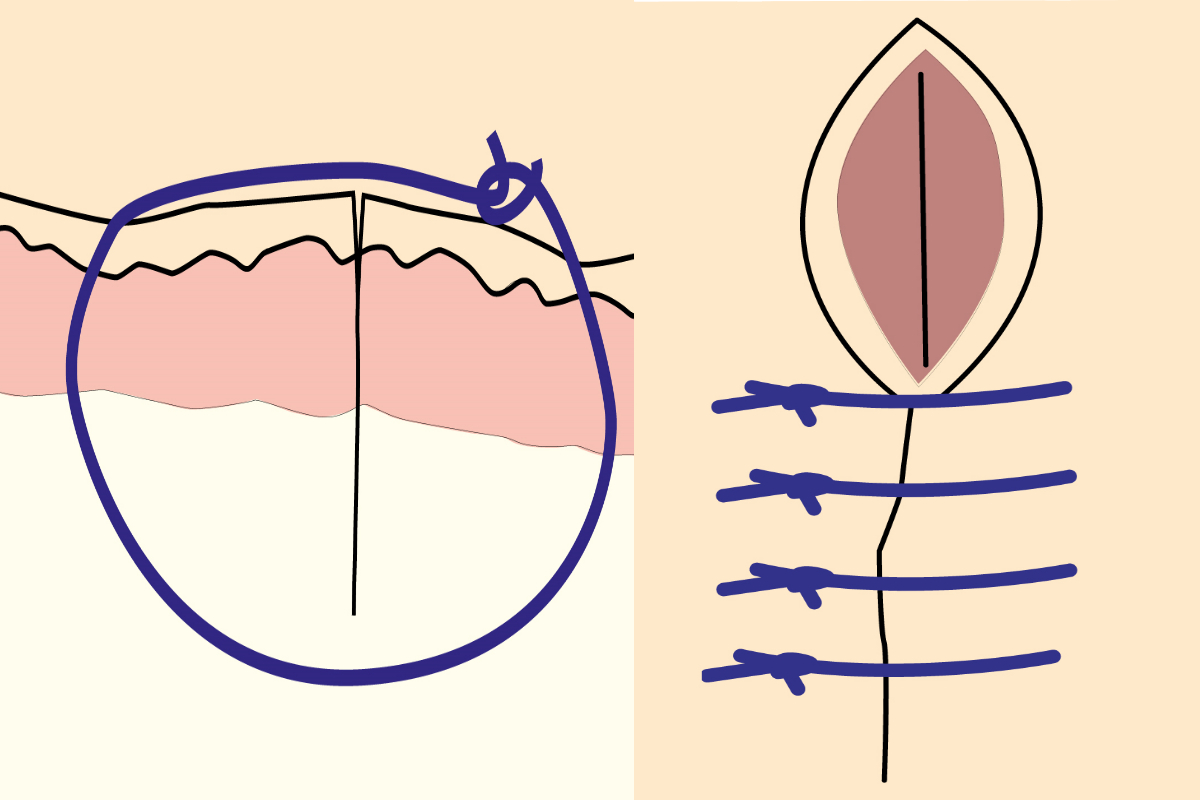
- A bite is taken symmetrically at an equal distance from either side of the wound and pulled tight.
- A knot is placed, and the suture material is trimmed before repeating the method until the wound is closed.
- This type of suture is useful for closure of the linea alba during abdominal surgery or other areas requiring more strength.
- Easy to apply.
- Secure anatomical closure.
- Allows adjustment of suture tension.
Usages
- Skin, subcutaneous tissue, fascia, vessels, nerves, gastrointestinal and urinary tract.
2. Simple Interrupted Intradermal Suture
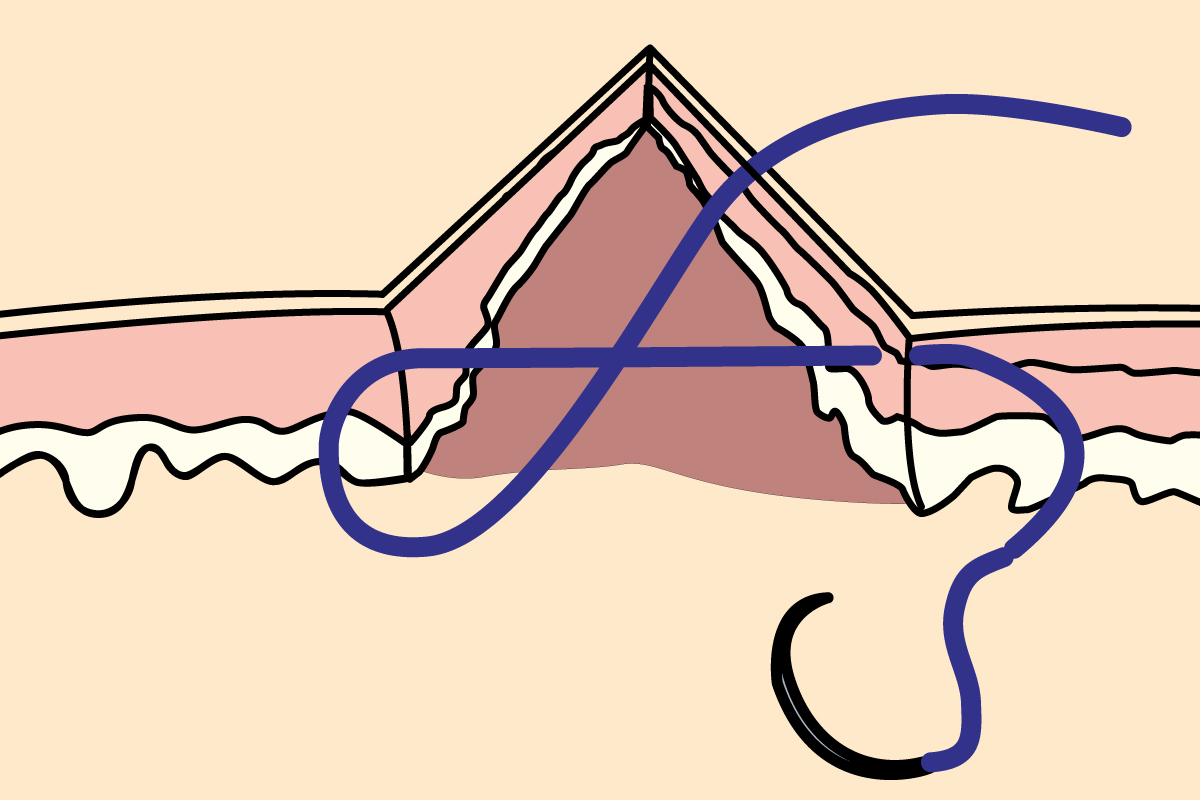
- Upside down simple interrupted to ‘bury the knot’.
- These are placed in a simple interrupted pattern below the skin and the bites of the suture lie vertical to the incision.
- They are used to eliminate dead space and to relieve tension on the skin sutures.
- They are useful to reduce patient interference and to eliminate the need for suture removal in sensitive areas.
- This pattern should be used in conjunction with a buried knot(s).
- Absorbable suture material should be used.
Usages
- Intradermal or subcuticular closure.
3. Interrupted Cruciate (Cross Mattress) Suture
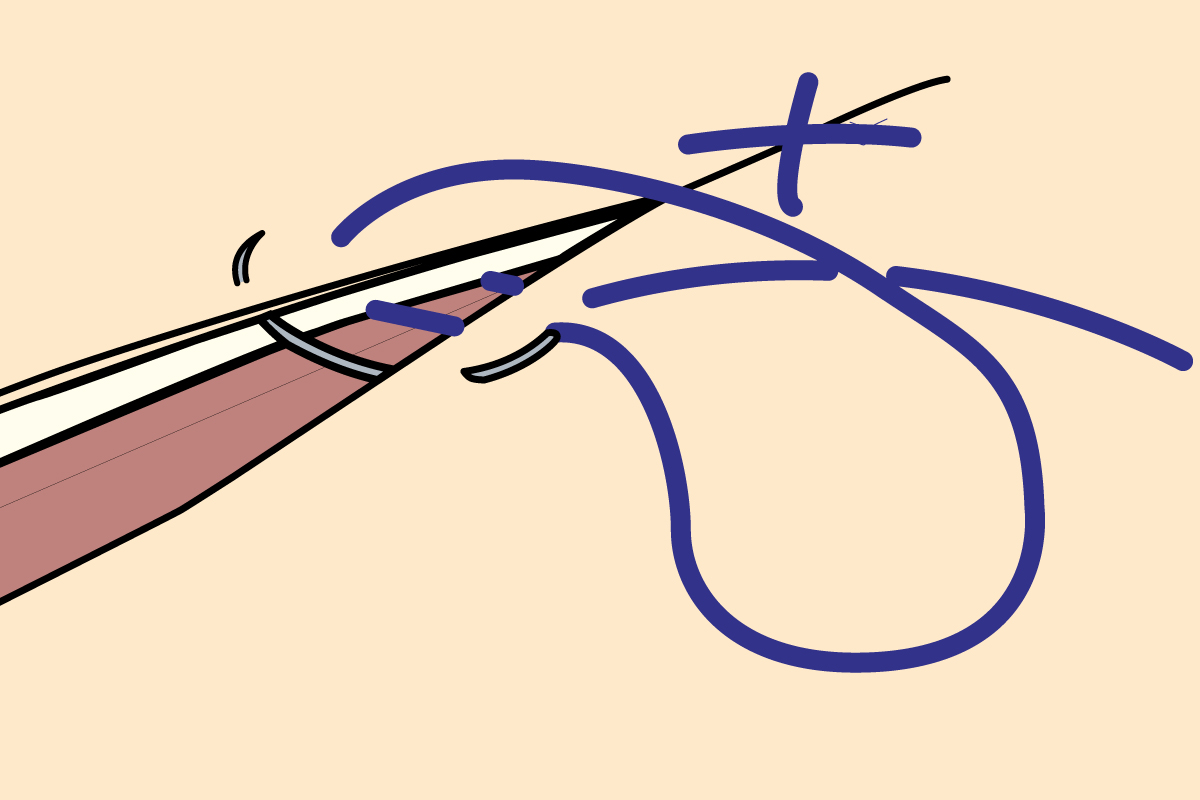
- An ‘X’ shape is created over the wound.
- A bite is taken from one side, passing to the other, before advancing forwards by 8–10 mm then repeating from the original bite side.
- A knot is then placed to join the suture ends, over the top of the wound.
- For this suture to be most effective, a square should be created with the corners of the suture.
- This suture is used for tension relief.
- Stronger and quicker than simple interrupted sutures, as more of the wound is closed with each suture placed.
- Prevents eversion.
Usages
- Skin.
4. Simple Continuous Suture
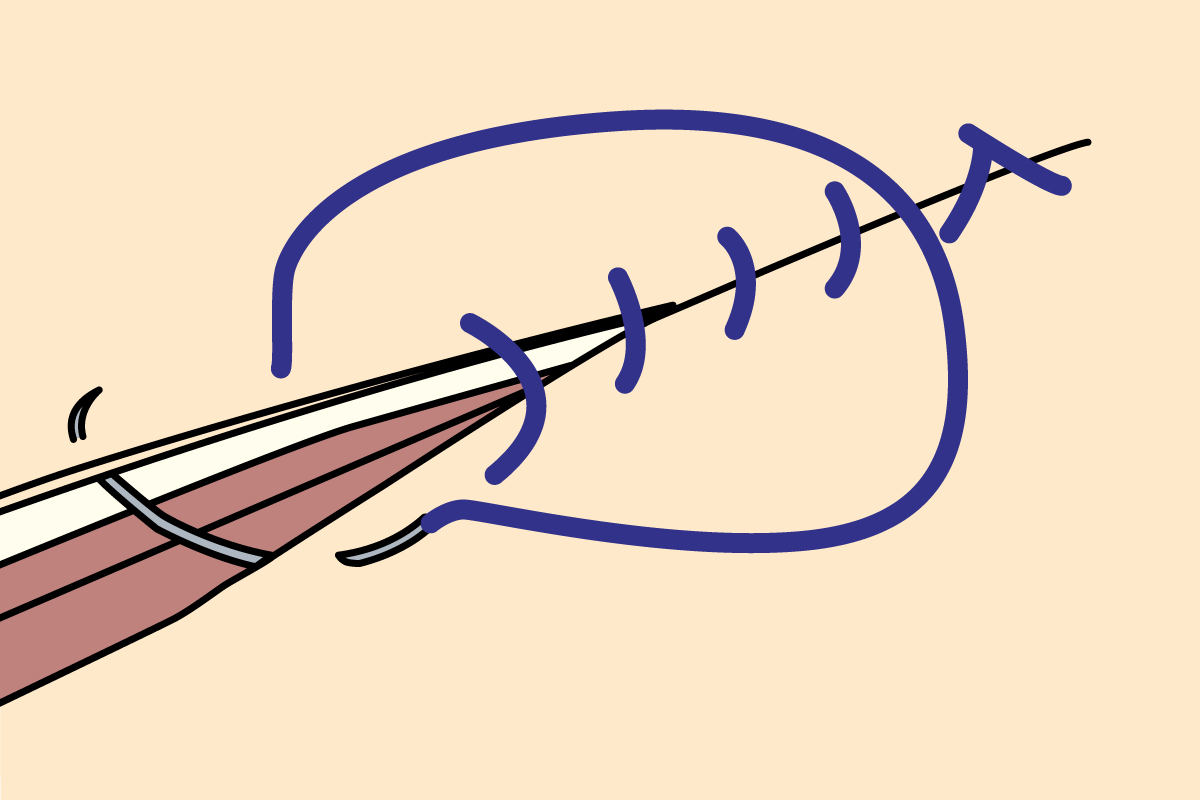
- Place an initial knot.
- Take a bite of 0.5–1 cm from either side of the wound.
- Pull suture material tight so wound edges are appositional.
- Repeat the suture a short distance away from the first; the bite should start from the same side each time as the original bite until the wound has been closed.
- Place a knot to secure the wound closure.
- Faster than interrupted suture patterns.
- Promotes suture economy.
- Provides a more air-tight or fluid-tight seal.
- More difficult to adjust tension.
- Can fail completely if the knot is weak or inadequate.
Usages
- Skin, subcutaneous tissue, fascia, gastrointestinal and urinary tract.
5. Continuous Intradermal Suture
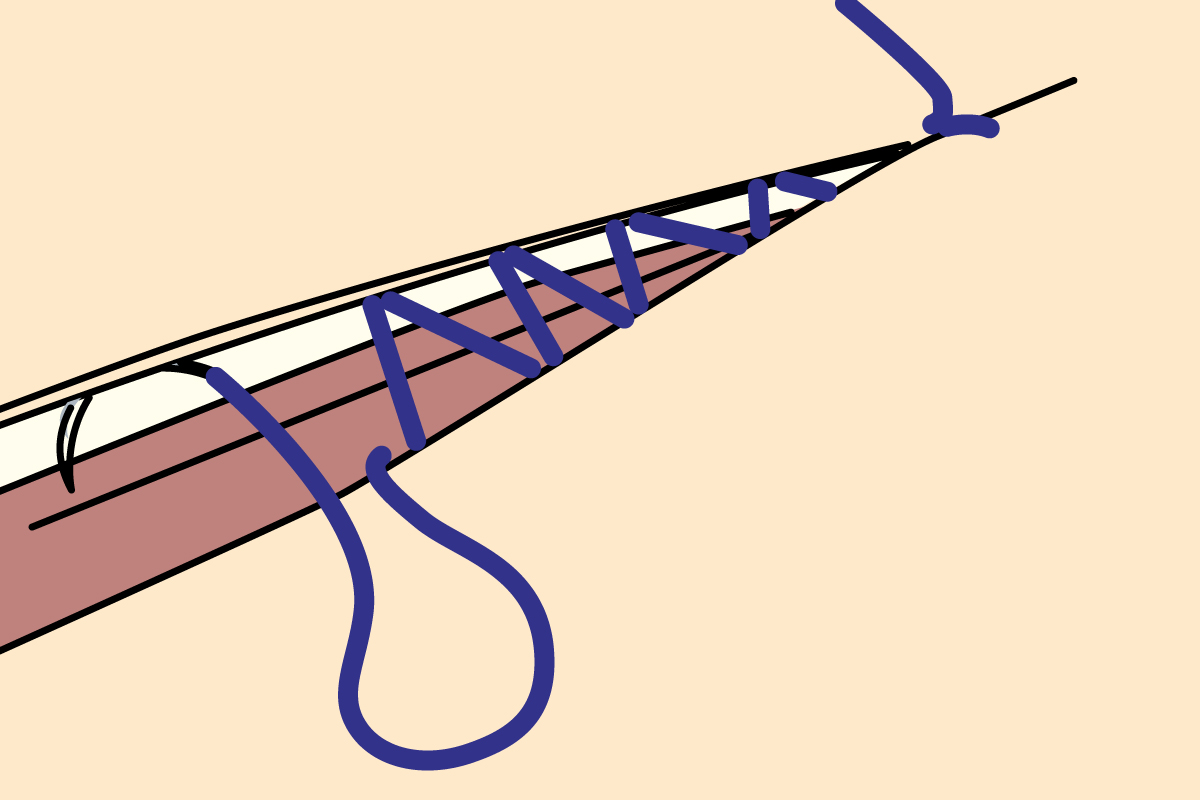
- Another modification of a simple continuous and modified horizontal mattress suture.
- The suture passes horizontally through the layers of the dermis, taking a bite from alternating wound edges, and the skin is pulled closed with no sutures visible.
- This is a suture of low strength so is usually used in areas with low tension, however, in a higher tension wound, skin sutures may be used in addition.
- Intradermal sutures are more comfortable for the patient and help to prevent patient interference, they avoid tracking of infection into the wound and there is minimal scarring.
- Promotes suture economy.
- Provides good skin apposition.
- Weaker than skin sutures.
- No sutures to remove.
Usages
- Intradermal or subcutaneous closure.
6. Ford Interlocking Suture (Reverdin – Blanket Stitch – Lock Stitch)
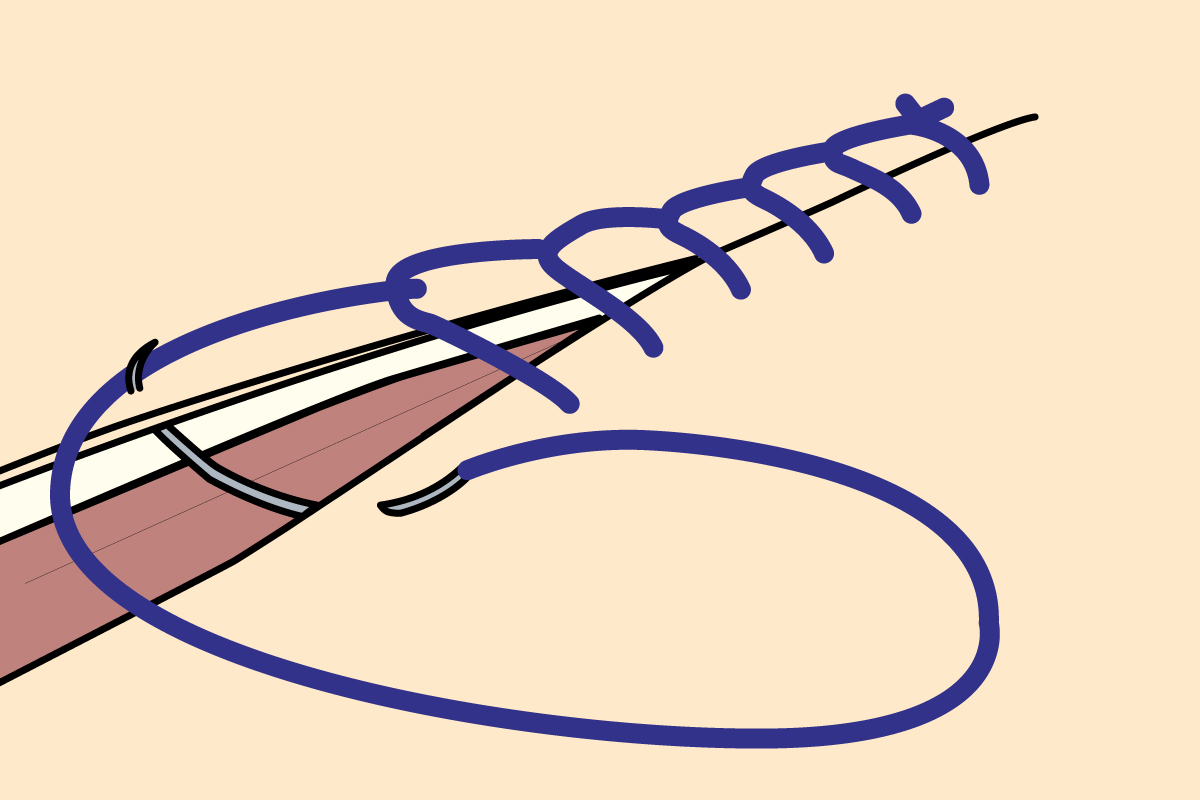
- A modification of a simple continuous suture.
- Secure the suture material with a knot.
- A bite is taken from each side of the wound.
- Before pulling the suture tight, the material is threaded through the loop leaving an ‘L’ shaped suture.
- Repeat until the wound is closed.
- These create better skin apposition than a simple continuous suture.
- More difficult to remove.
Usages
- Skin
7. Gambee Suture
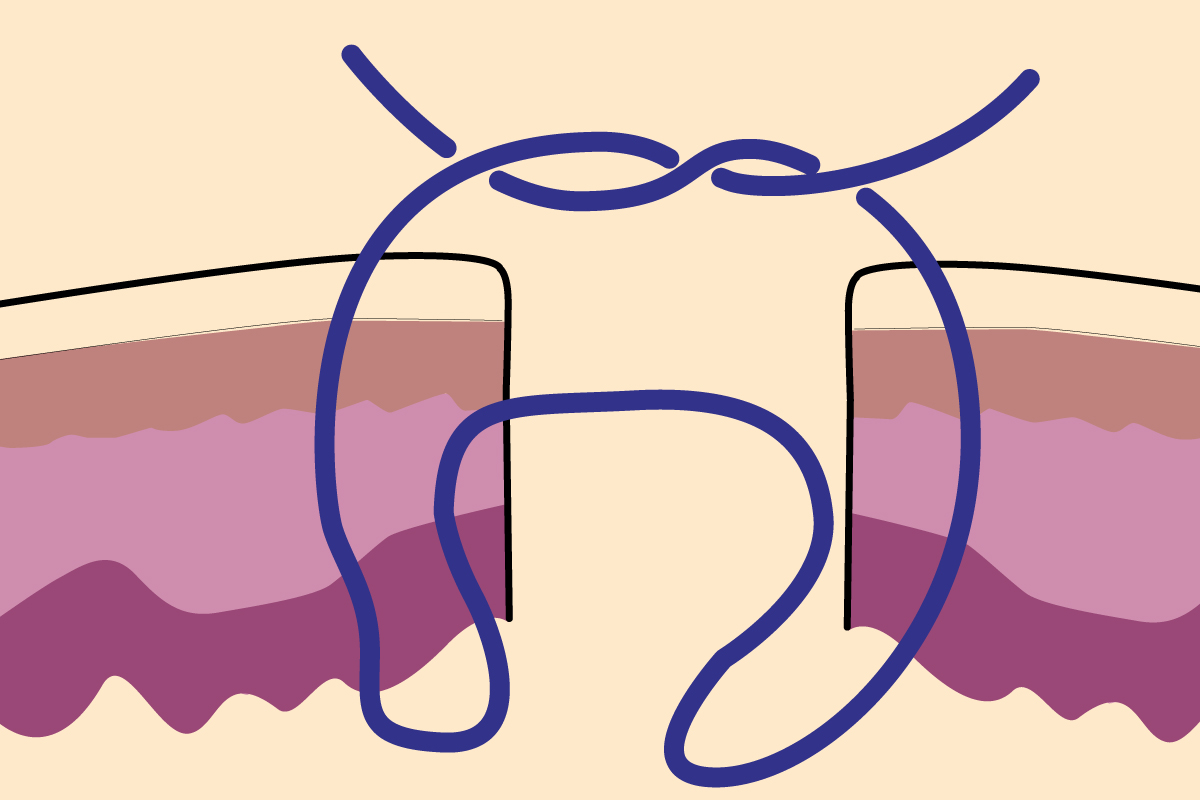
- A modified simple interrupted, but more difficult to apply.
- Helps control mucosal eversion.
- Less susceptible to bacterial ‘wicking.
- This is a specialized suture used in the repair of the intestine.
- A Modified Gambee is placed in the same way but does not penetrate the lumen of the intestine.
Usages
- Intestinal anastomosis.
D. Inverting Patterns
1. Cushing Suture
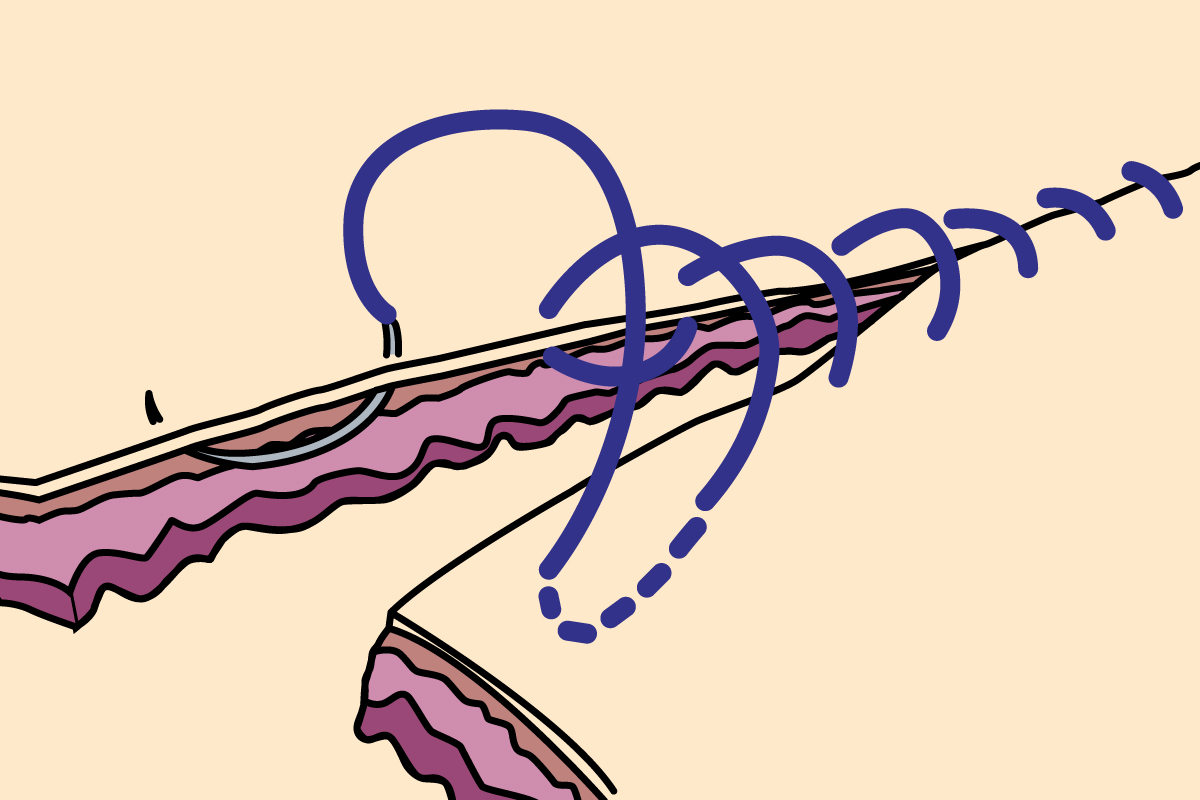
- A type of variation on continuous horizontal mattress sutures.
- Suture passed through the submucosa but not mucosa.
- This technique is often used to close the incisions in hollow organs such as the stomach, urinary bladder, and uterus.
- The suture penetrates into the submucosa without penetrating the organ lumen.
- The suture runs from both sides of the incision, parallel to each other.
Usages
- Closing hollow viscera like bladder, stomach, or uterus.
2. Connell Suture
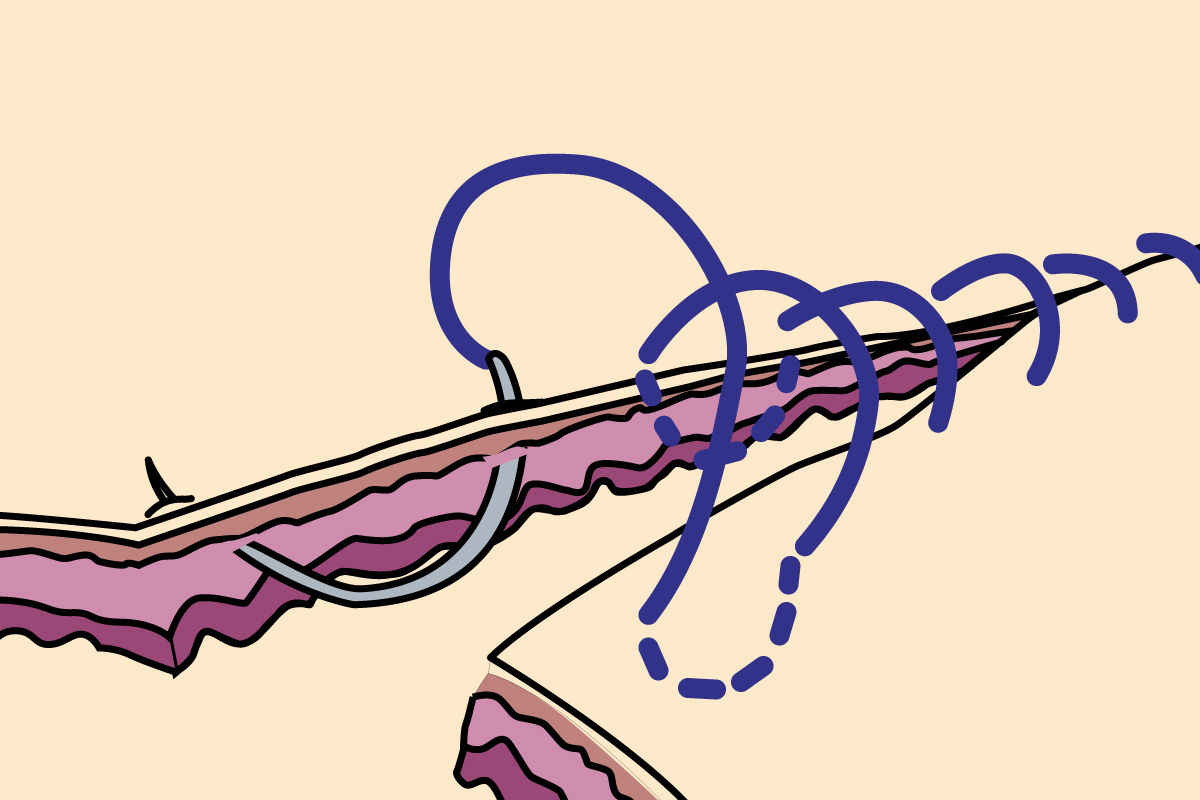
- Similar to Cushing except for complete penetration into the lumen of the viscera.
- This technique is often used to close the incisions in hollow organs such as the stomach, urinary bladder, and uterus.
- The suture penetrates into the submucosa and mucosa.
- The Connell suture technique is almost identical to the Cushing suture technique. These two suture techniques are separated according to the tissue they penetrate during suture passage.
- Connell suture technique is used to pass through the lumen.
Usages
- First layer of hollow viscera closure (stomach, bladder, or uterus).
3. Lembert Suture
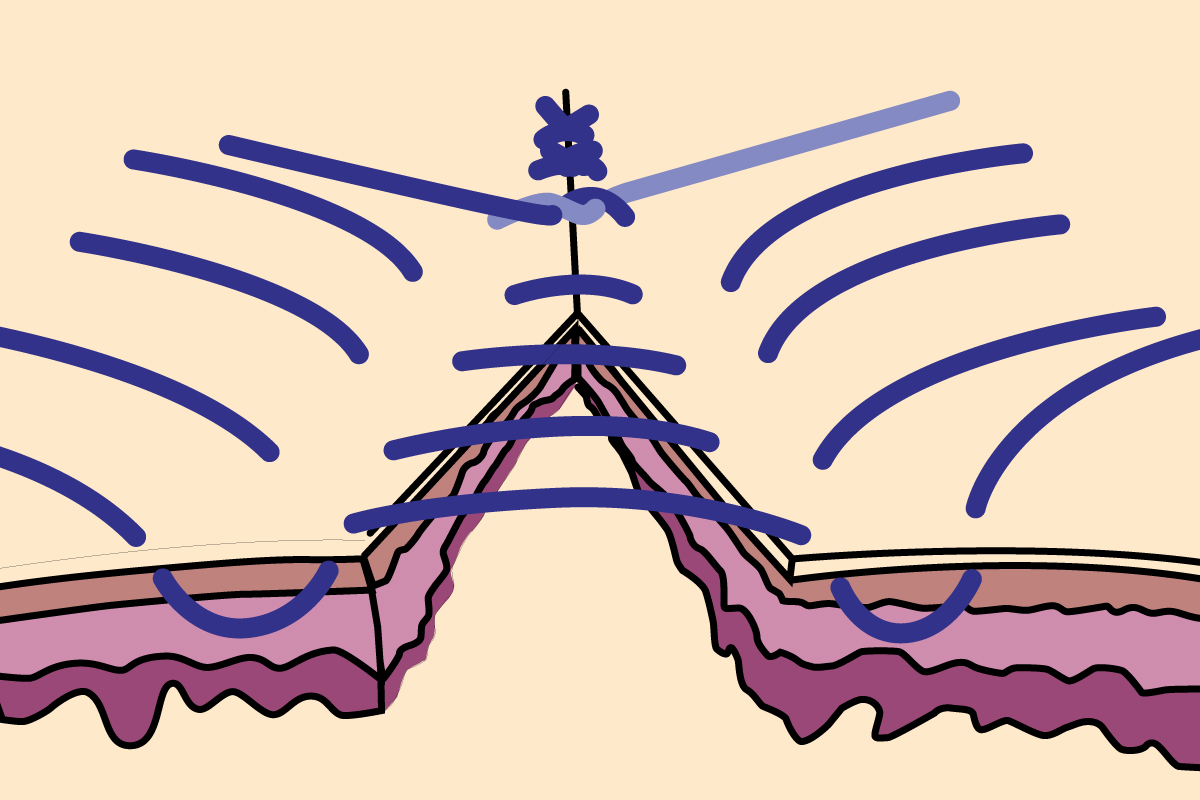
- This is similar to the vertical mattress suture and is used to repair hollow organs.
- As the holding layer of an organ is the submucosa, the needle should penetrate only to this depth and never into the lumen (Penetration of submucosa but not mucosa).
- As the suture is tightened it inverts the tissues.
Usages
- Closing hollow viscera like bladder, stomach, or uterus.
- Fascial imbrication.
4. Halsted Suture
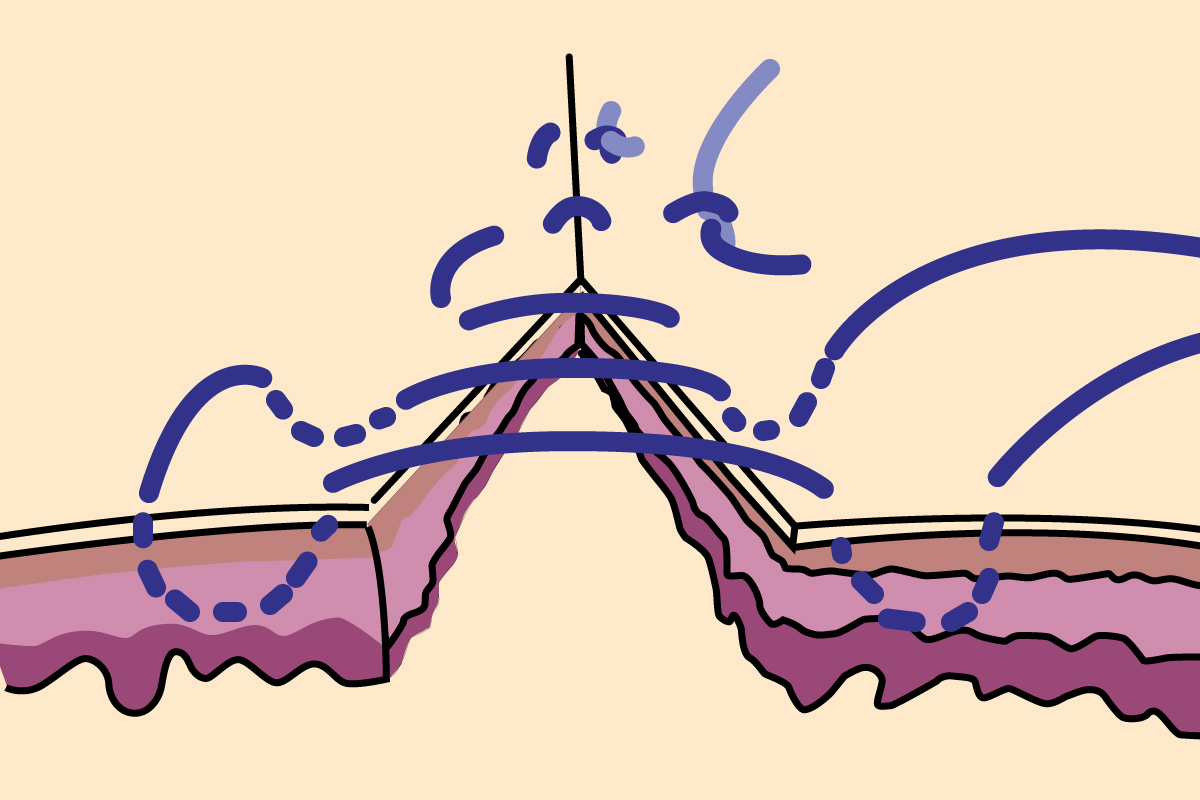
- A variation of the Lembert.
- The technique is essentially the same as for a vertical mattress suture except that two sutures are placed in a parallel fashion before they are tied.
- This produces an interrupted pattern in which the edges of the wound are inverted.
Usages
- Second layer of closure for hollow viscera.
5. Parker Kerr Suture
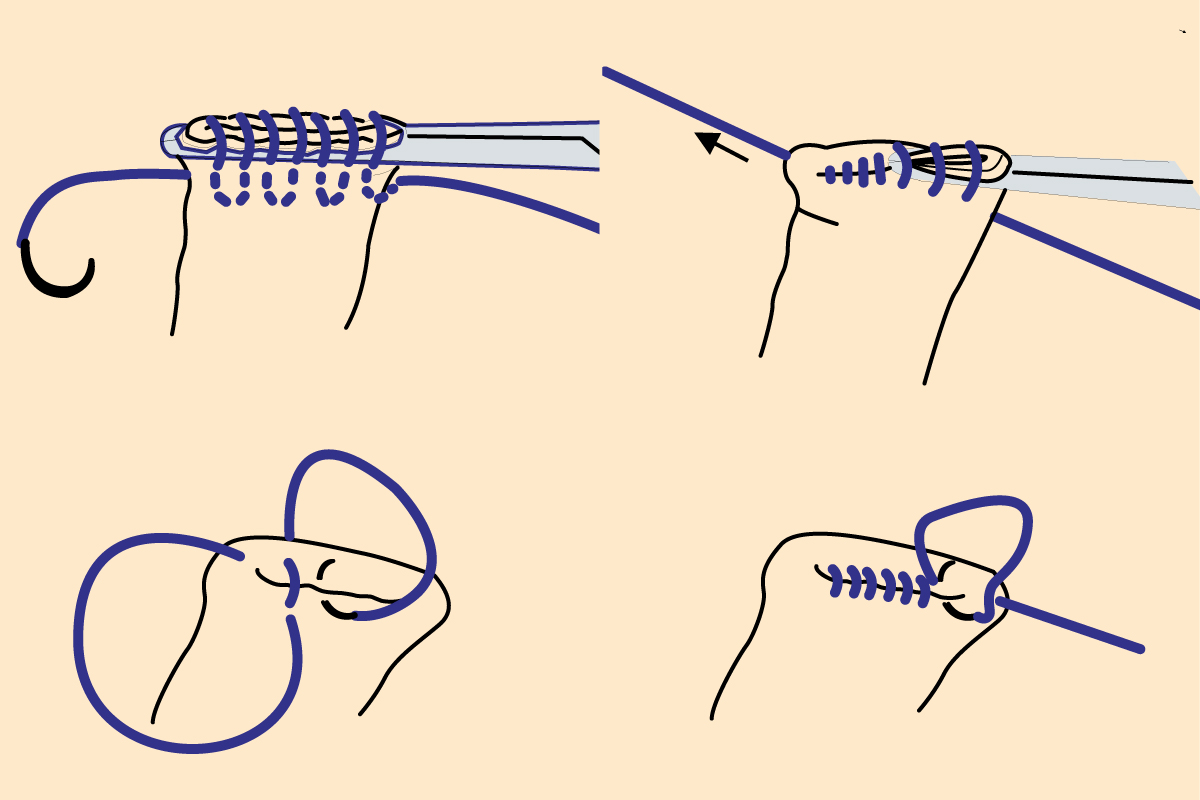
- A combination of a Cushing and a Lembert suture pattern.
- Two-layer closure is historically utilized to aseptically invert a transected, clamped viscus.
- A single layer of Cushings sewn over a clamp and tightened as the clamp is removed.
- Followed by an inverting seromuscular pattern (Oversewn with Lembert).
Usages
- Closure of hollow viscera stumps.
6. Purse String Suture
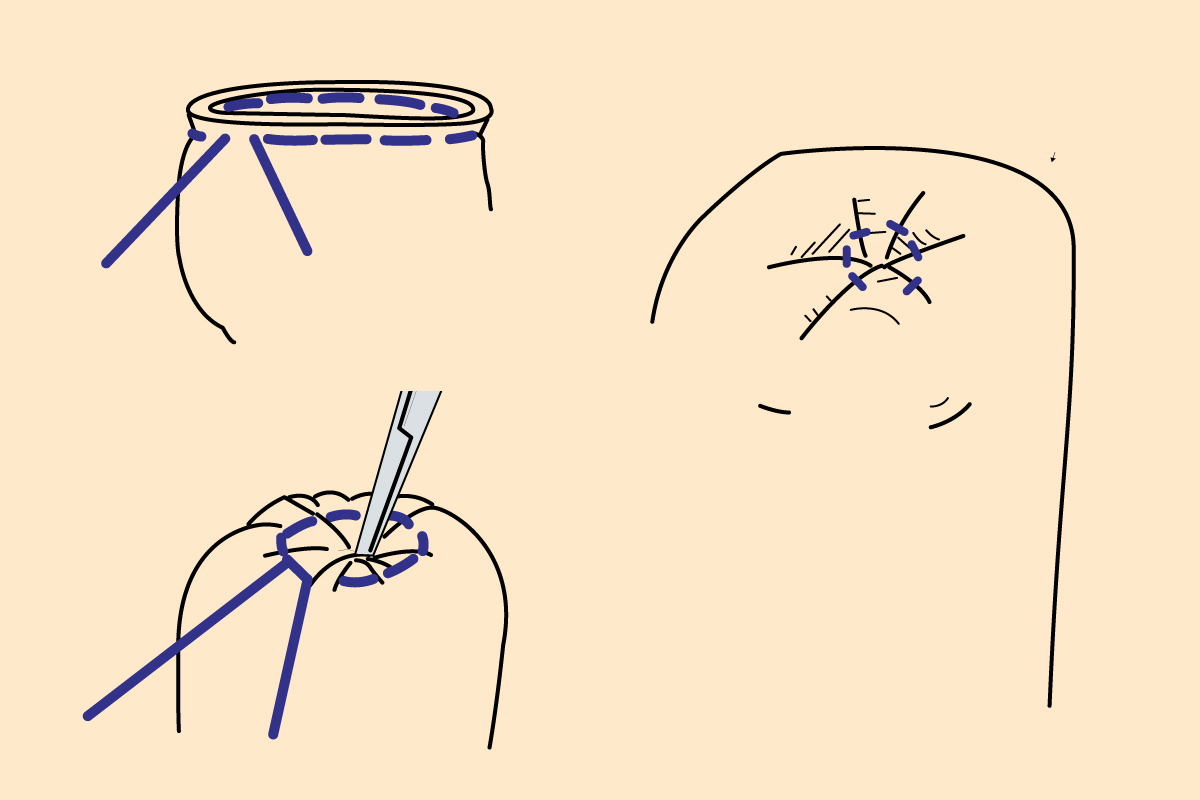
- Circular variation of Lembert.
- A bite is taken at regular intervals around the perimeter of an opening so that when pulled tight, it can be made smaller or closed completely.
- This technique may be used to close visceral stumps and to secure percutaneous tubes into a viscus such as may be seen in gastrostomy and cystostomy procedures.
- Useful for areas such as the rectum (to correct a prolapse).
Usages
- Closure of hollow viscera stumps or securing of tubes and catheters.
E. Tension Sutures
1. Interrupted Horizontal Mattress Suture
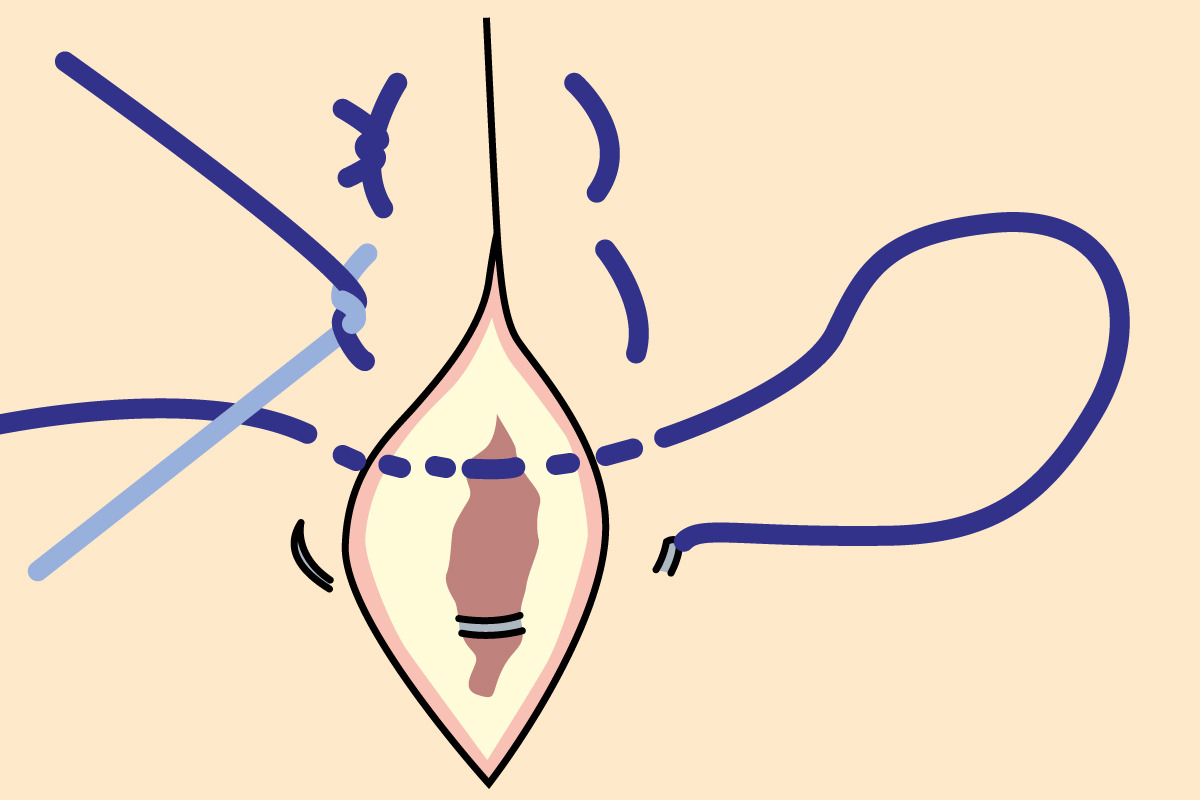
- The needle is passed from one side of the wound to the other (2–5 mm away from the wound edge), then horizontally back across the wound, leaving a short gap (6–8 mm) between the bites.
- This creates a horizontal suture on either side of the wound.
- A knot is then placed to join the suture material on the original side.
- This suture is mostly used for relieving tension.
- Appositional to everting suture pattern depending on the tightness of throws.
- Can strangulate blood.
Usages
- Closure in areas of high tension or occasionally used in the closure of flat tendons or muscle with minimal fascia vessels at wound edges.
2. Interrupted Vertical Mattress Suture
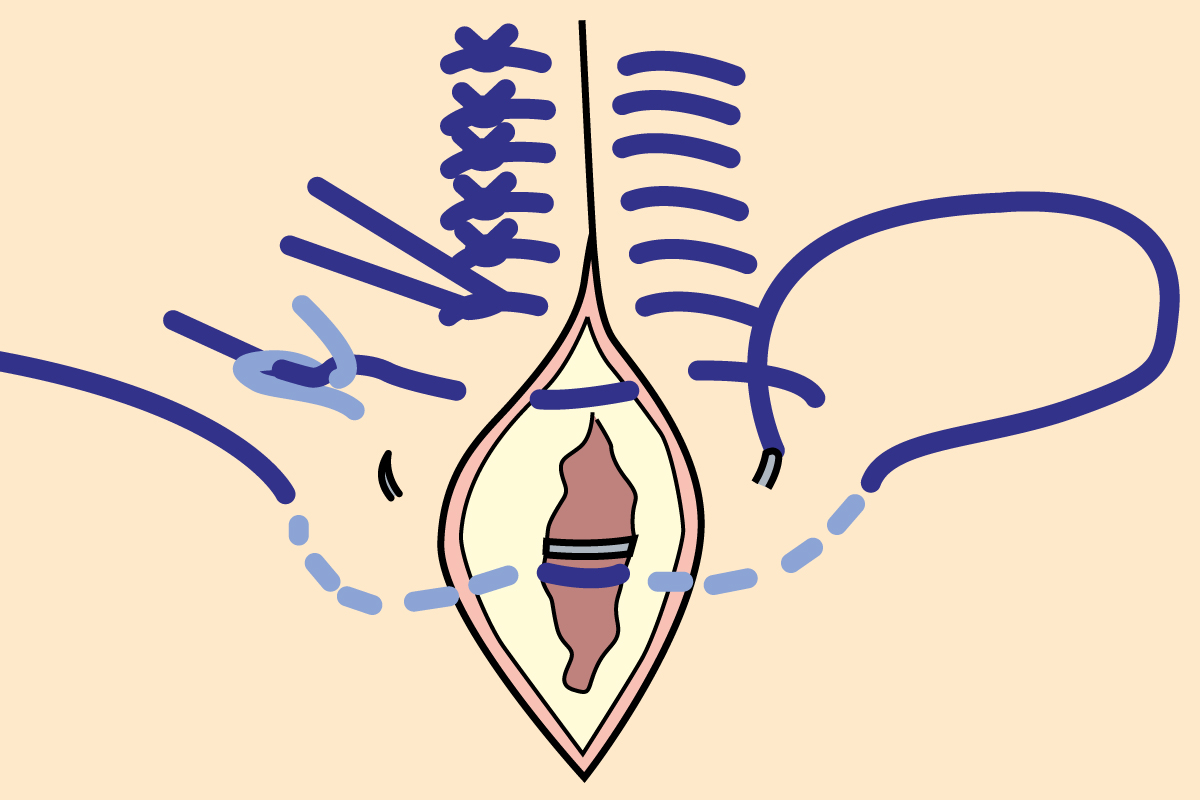
- A bite is taken 8–10 mm away from the wound and passes through to an equal distance away from the wound on the opposite side.
- The suture is then repeated back across the wound, but this time, a bite is taken vertically from the original bite 3–4 mm away from the wound, creating a vertical suture on either side.
- A knot is then placed to join the suture material on the original side.
- This suture is more effective at relieving tension than the horizontal mattress.
- Appositional to everting.
- Stronger in tissues under tension than horizontal mattress.
- Less likely to occlude small vessels at the wound edge.
Usages
- Closure in areas of high tension (i.e. some situations of skin closure).
3. Far-Far-Near-Near and Far-Near-Near-Far Suture Pattern
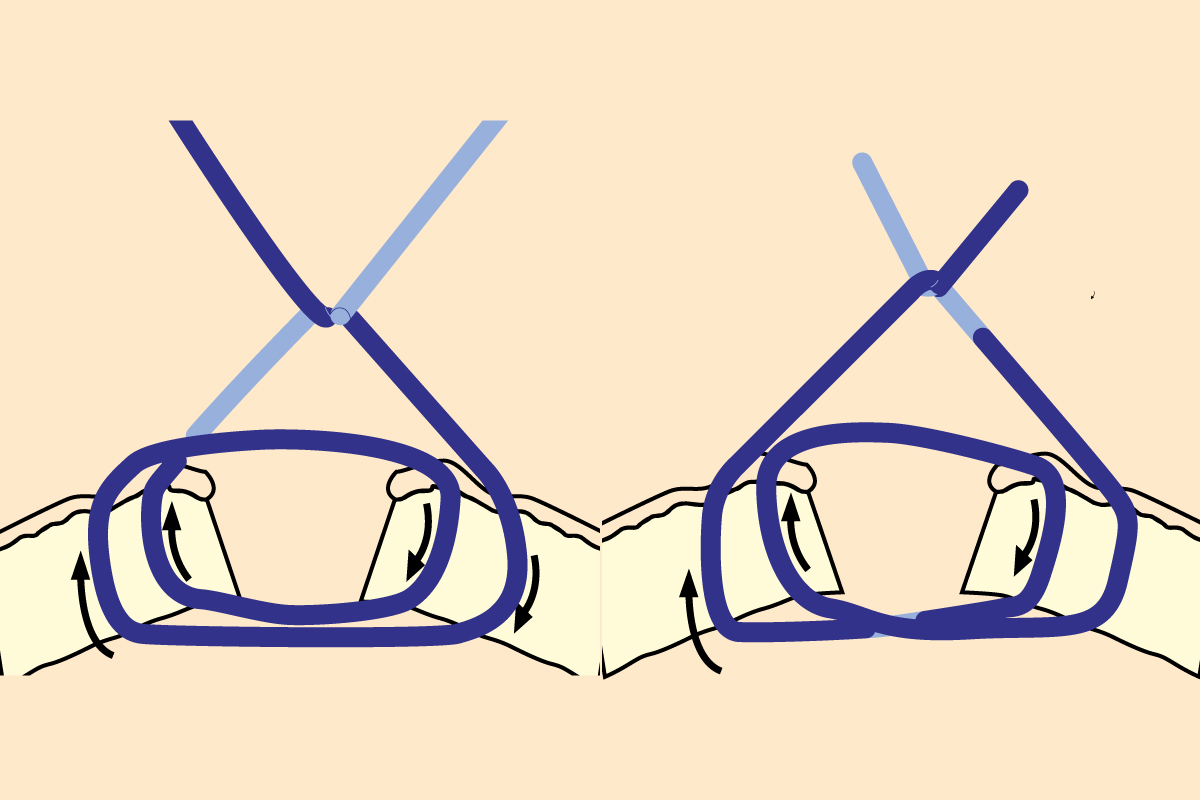
- Variations of vertical mattress.
- Can provide necessary tension for wound approximation without direct tension to wound edge.
Usages
- Skin, subcutaneous, and fascial closure under tension.
4. Interlocking Loop Suture
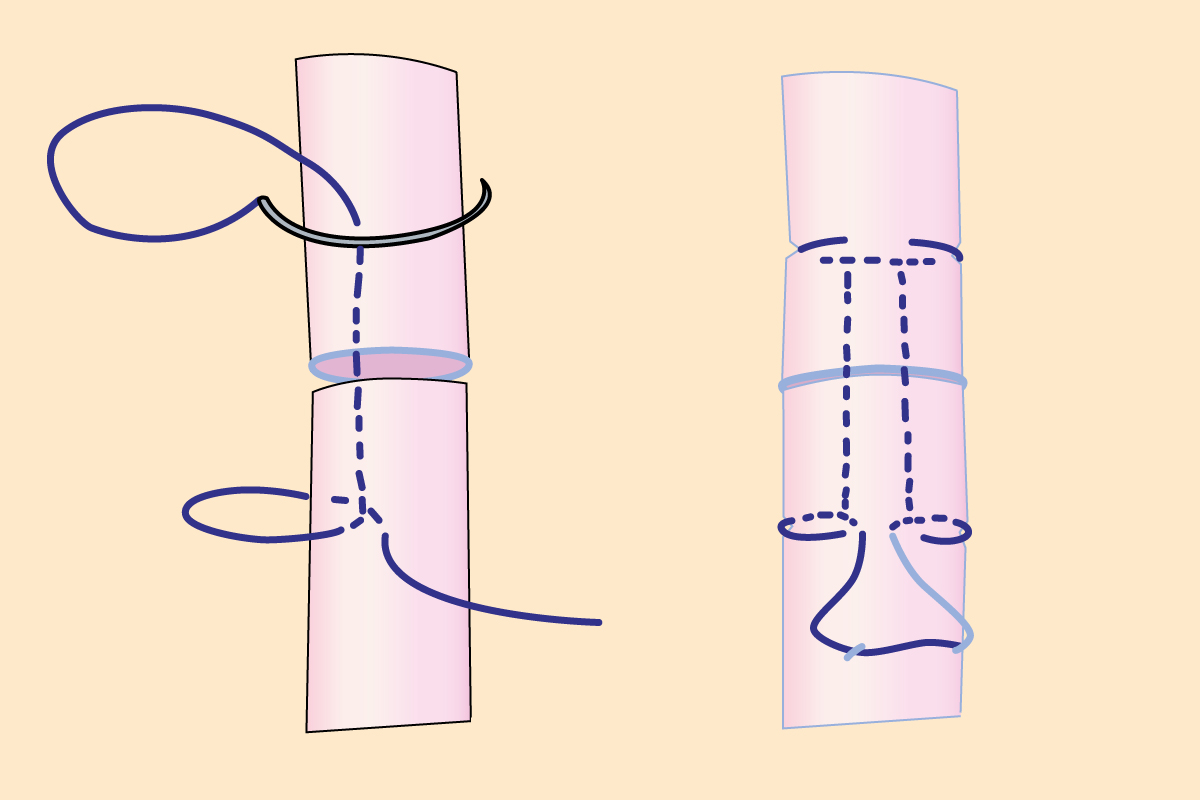
- Self-tightening suture ‘locks’ into tissue.
- Inserted 1/3 distance from tendon edge, advanced along the tendon, across the gap, looped across the tendon, and passed back 1/3 from the opposite edge, looped and tied
- Less bulk insheathed tendons
- Double locking loop applied to gastrocnemius tendon
- Attached to calcaneus thorough drill hole
Usages
- Tendon repair.
5. Three Loop Pulley Suture
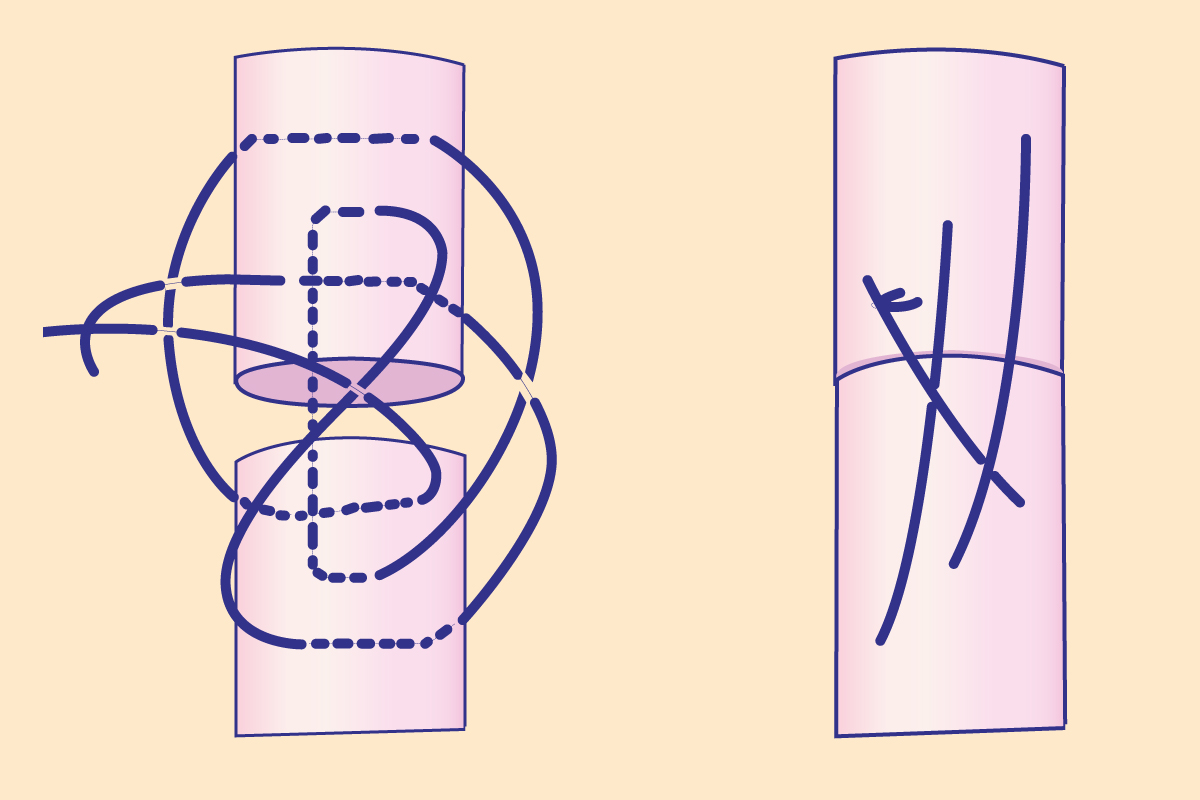
- Three loops of suture oriented 120 degrees to the previous loop.
- Resembles a far-near pattern type but revolves around the tendon 360º.
- The initial loop is a near-far, next midway, last is far-near.
- Higher tensile strength and more resistance to gap formation than the locking loop
Usages
- Tendon repair.
F. Other Suture Patterns
1. Chinese Finger Trap Suture Pattern
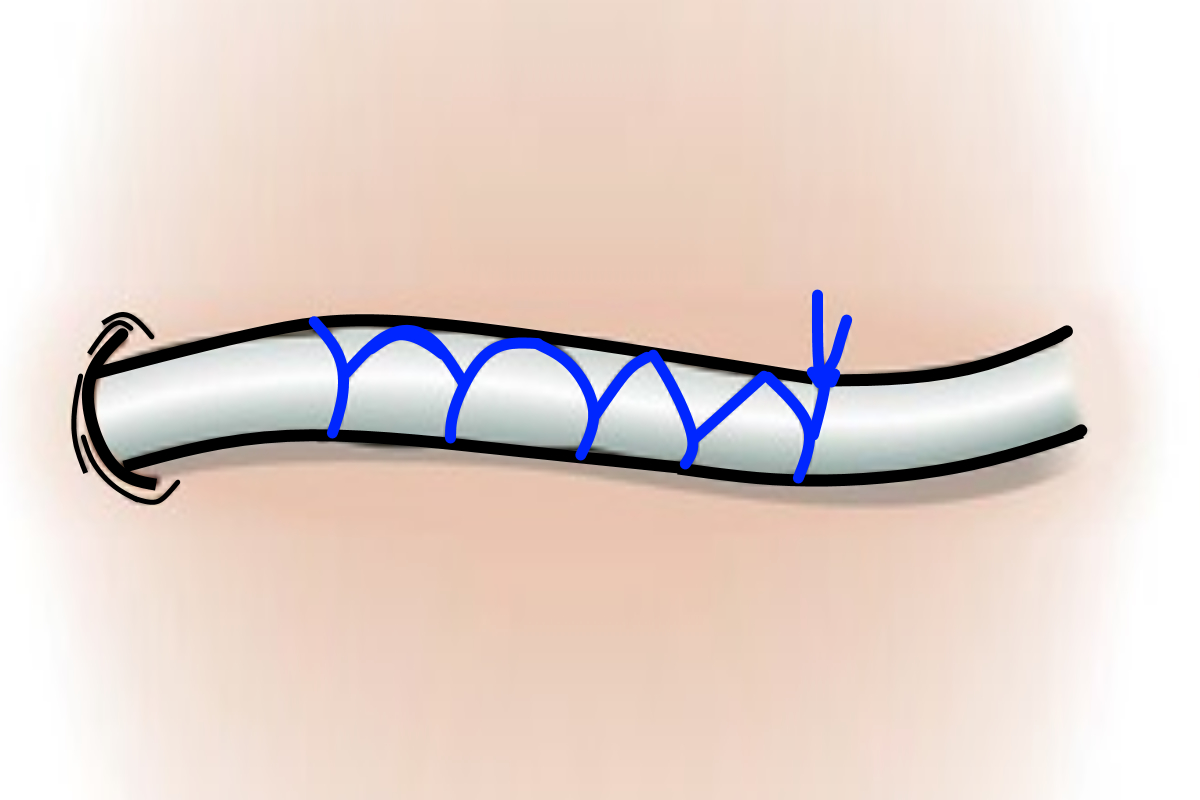
- This type of suture is used to secure tubes (such as chest drains) at their site of entry into the body.
- Tension on the tube increases as the tube is pulled, thus preventing its removal.
- A bite is taken at one side of the tubing and a square knot is placed around the tube.
- The suture material is taken back around the tube and a surgeon’s knot is tied.
- This is repeated 5–10 times around the tube ending with another square knot.
Usages
- Secure tubes (such as chest drains) at their site of entry into the body
There are many types of suture patterns available to close the incisions and wounds encountered daily in practice. Selecting the appropriate type of pattern is important to achieve not only uncomplicated wound healing, but also a good cosmetic appearance.
Choosing the appropriate suture pattern may seem daunting to some, but in reality, most surgeons utilise a few standard suture patterns that they feel comfortable with and that have worked for them in the past.
Some types of speciality patterns (e.g. three-loop pulley or locking loop) are used in special circumstances, and reference to them can always be made before an operation to refresh the memory.
The important factor is not always the pattern type, but that the appropriate suture material type and size have been chosen, the knots are tied securely, and the correct tissues have been engaged.
Finally, some golden rules are worth remembering:
- It is worth remembering that a continuous line should end with one more throw than it started with.
- Make sure to tighten your knots appropriately.
- Use a sliding or surgeon’s knot only when the tissues are under tension, otherwise use a normal square knot.
- Appositional patterns will provide the best anatomical reconstruction in most cases, and should be preferable to everting or inverting patterns.
- Tension relieving sutures should never need to be applied on a routine basis. Most tissues (especially skin) should be closed without significant tension or need for tension relieving suture patterns.
